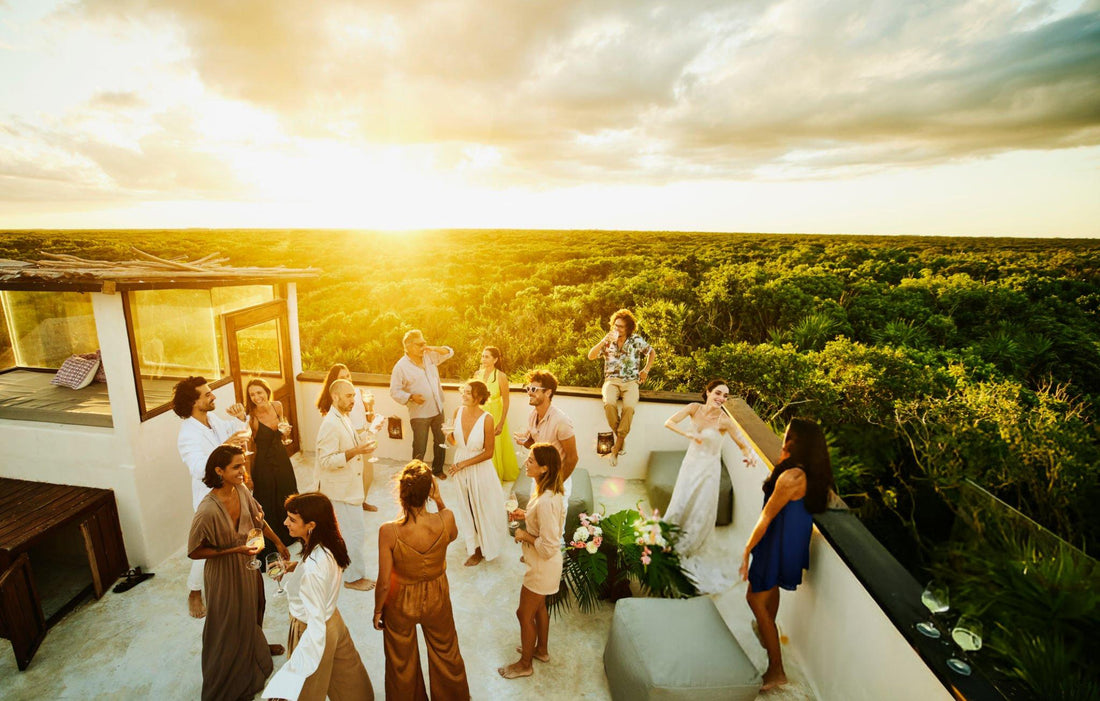
Audio Integration Tips for Wedding Video Equipment
Clear visuals are expected in wedding videography, but it’s the audio that often leaves a lasting impression. From vows to laughter and heartfelt speeches, sound captures the spirit of the day in a way visuals alone can’t. That’s why understanding how to handle audio matters just as much as choosing the right lens or frame. While most people focus on the cameras and lighting, the real magic comes through when clean, crisp audio complements the visuals.
Whether you're just starting with wedding videography gear or have been recording events for years, poor audio can ruin even the most beautiful shot. Wind noise, background chatter, or uneven volume levels distract from the moment. Investing time into learning how to manage and integrate audio will make your wedding videos more professional and more meaningful for your clients.
Understanding Audio Equipment For Wedding Videography
There are three main types of tools you'll need to record good sound during a wedding: microphones, audio recorders, and editing software. Each one adds value in its own way and helps tighten up the final product.
Here’s a breakdown of what each type of gear is used for:
- Microphones: These are your front line. Lavalier mics clip onto clothing for capturing intimate moments like vows. Shotgun mics have a longer reach and are great for catching sound from speakers or during the ceremony from a distance. Handheld mics are reliable for interviews or impromptu comments at the reception.
- Audio Recorders: These store sound separately from your camera. That means even if something goes wrong on the video side, you're still backed up. High-end recorders often let you plug in multiple inputs, like a mic for the officiant and another for ambient music.
- Audio Software: This is where everything comes together during editing. You can fix volume dips, remove background hum, and blend multiple sources. Basic programs offer enough features to polish up recordings, while more advanced tools give you greater flexibility.
Here’s a quick example. Imagine you’re filming a beach wedding where wind, waves, and distant chatter could overpower the couple’s voices. A lav mic under the bride's dress and groom’s jacket, both wired to bodypack recorders, can capture what matters most without picking up all the background chaos. Later, editing software helps balance the levels so everything flows naturally.
Don't skip over this step just to focus on visuals. The right mix of audio gear is part of what makes wedding videos memorable.
Tips For Integrating Audio With Video
Good sound isn’t just about having the best tools, it’s about using them the right way. Getting audio and video to work together takes a few proven tricks, especially during wedding shoots where timing can’t be rehearsed and background noise is constantly shifting.
Here are three ways to better integrate your audio with your video footage:
1. Mic Placement Matters
Keep lavs snug and hidden beneath clothing, making sure they don’t rub against fabric or jewelry. For shotgun mics, angle them toward the sound source with as little obstruction as possible. Always think ahead. Figure out where the action will be, then place your gear accordingly.
2. Syncing Audio With Video
Use a clap, tap, or even a slate at the start of recording to help you sync audio with the video timeline later. If you’re using multiple cameras or mics, make it a habit to mark each take, especially during key events like vows and speeches. This saves time during editing and avoids confusion.
3. Cutting Down Background Noise
Try to isolate the audio source whenever you can. During receptions, place mics as close to speakers as possible. Use noise-canceling tools when editing to clean up hums or chatter. Sometimes, just tweaking the mic’s direction can help avoid picking up unwanted sounds like air conditioners or cutlery clatter.
These small moves make a big difference. Instead of relying on your camera’s built-in mic, paying attention to how and where you record sound levels up your skills and improves the final product. Once you find a method that works well on one wedding shoot, stick with it and refine it from there.
Advanced Techniques For Audio Clarity
Once your recording setup is in place and your basic mic strategy is solid, the next step is sharpening your results. Weddings can be unpredictable. Between sudden laughter and clinking silverware, audio quality can shift without warning. That’s where a few enhancements come into play.
Start with pop filters and windshields. These might seem like small add-ons, but they make a noticeable difference. Pop filters cut out harsh P and S sounds when someone is speaking close to the mic. Windshields, often foam covers or furry mic wraps, are useful at outdoor weddings. They cut down on distortion from breezes or soft gusts that might go unnoticed until playback.
During a ceremony or speech, keeping audio levels consistent is just as important as capturing the moment. Most audio recorders allow you to monitor your input levels in real time. If one source is peaking while another is too low, your editing process becomes harder and the result won’t sound smooth. Wearing lightweight headphones during recording helps catch issues early. A quick listen before vows start is worth the few seconds it takes.
In editing, small tweaks go a long way. Noise reduction tools can clear out background hum but shouldn’t wipe out all ambient sound. Keeping some of the atmosphere gives the video more depth. Music should stay under dialogue but still help set the mood. If you’re blending multiple sources, stagger them slightly to avoid a flat, mixed-down sound.
One quick example. Imagine a toast delivered next to a loud speaker with music playing. You can mute that audio channel briefly, then layer a backup mic feed over it, keeping the speech clear while holding on to the energy of the room. This kind of solution separates average edits from the ones that people remember.
These steps don’t take much extra gear or time. With just a little attention to detail, they can turn average audio into something that feels personal and clear.
How Tall Shot Setups Help Improve Wedding Audio
Video towers and tall monopods are usually known for capturing great visuals, but they also help with getting better sound. With more height and angle variety, you gain more control over what your mic picks up and what it avoids during unpredictable wedding moments.
Here’s how elevated gear helps:
- Reduces crowd interference: Lifting your gear above head level avoids bumping and noise from nearby guests. That helps cut out low-frequency distractions like chatter and rustling clothing.
- Offers clear microphone direction: Shotgun mics are more precise when mounted above clutter like decorations, tables, or moving people.
- Helps track sound with action: When couples walk in or guests give speeches on the move, telescoping setups let your mic follow without getting in the way.
A sturdy, elevated mount also lets you hold extra equipment like wireless transmitters or compact recorders. Some setups make it easy to manage both your video camera and microphones at the same time, cutting down on the time it takes to switch or adjust gear.
With more control and less ambient noise sneaking in, tall setups upgrade both video and sound quality. That’s an advantage when you’re working in loud venues or need to isolate the action from the background.
Capturing Unforgettable Wedding Moments With The Right Sound
Great visuals retell the story, but it’s the audio that brings the feeling back. That quiet pause before a heartfelt speech or the cheer during a surprise dance makes wedding footage feel more alive. Getting the sound right adds real connection.
The best part is, you don’t have to overhaul your setup to get there. Start with gear you trust, use wind protection when needed, and go into each event with a sound plan. Focus on details like mic placement and recording levels so you’re ready when the moment starts.
Blending practical microphone use, clear recording choices, and simple editing work helps you build a video that’s smooth and watchable every time. Add Hi Rise Camera’s stable equipment to that, and your wedding videography flow becomes more dependable across the board. That means fewer surprises, sharper sound, and videos clients will appreciate long after the day ends.
To make your wedding videos truly unforgettable, having the right gear makes all the difference. Explore our wedding videography gear to get the perfect sound and visuals every time. At Hi Rise Camera, we build equipment that helps you capture every moment clearly and effortlessly on the big day.

